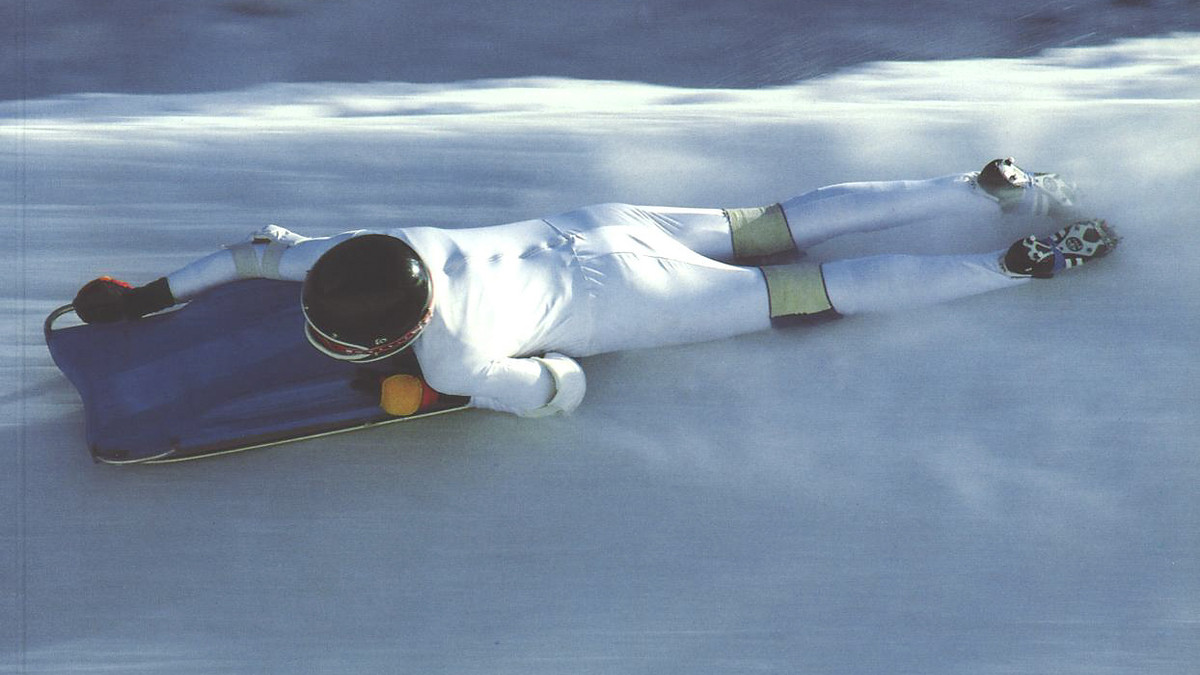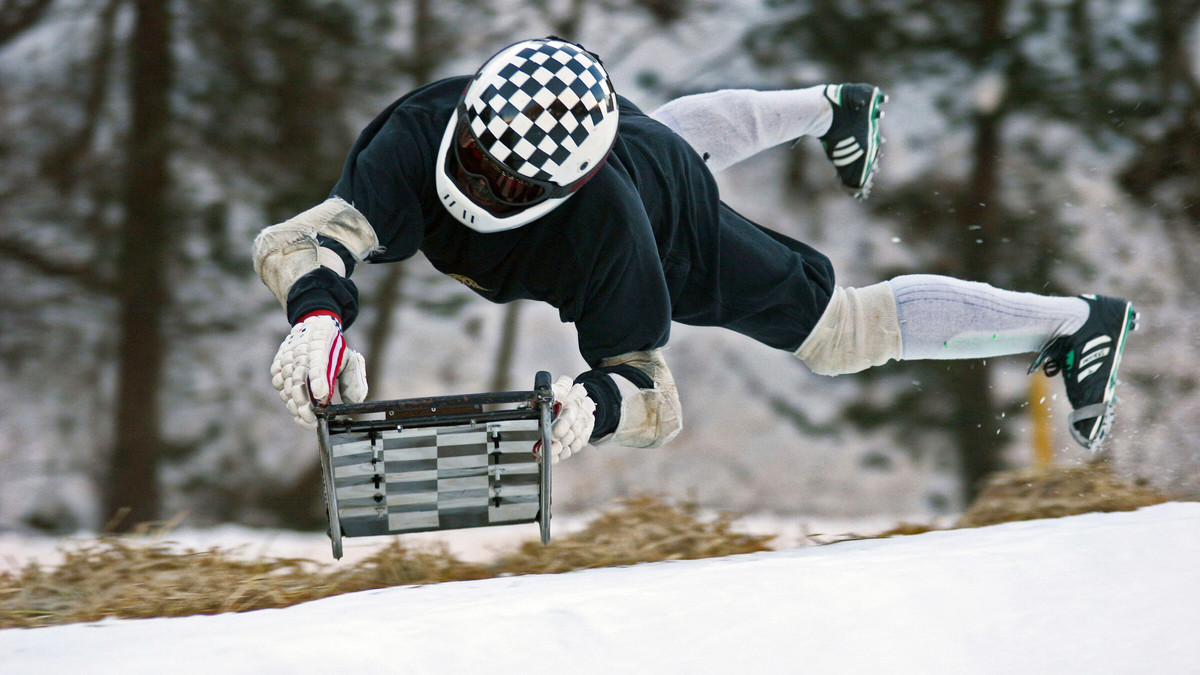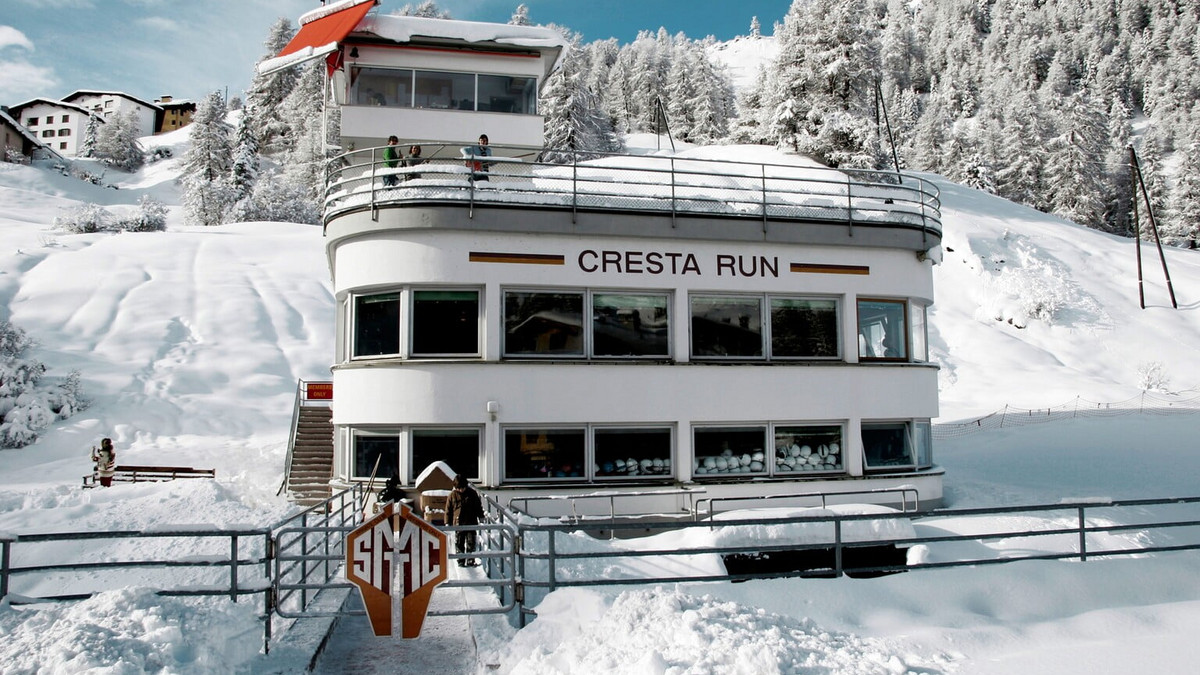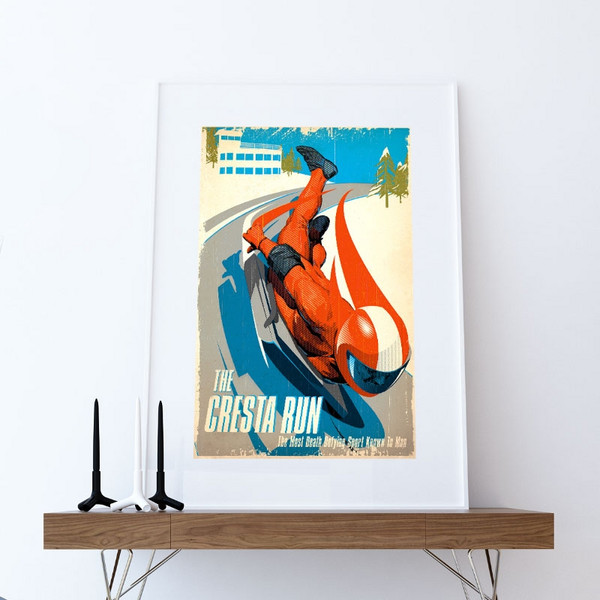Cresta Run
There is an extra dose of adrenaline awaiting you when you ride the legendary Cresta Run. At 140 km/h, Cresta riders thunder headlong down the ice channel, their noses just a few centimetres above the ice.
Brave athletes transform themselves into human torpedoes in the smoothly polished ice channel. Participants race down the ice headfirst on their stomachs at a breathtaking speed of up to 140 km per hour on a toboggan weighing 35 kilograms through the ice channel towards the finish line. The Cresta season starts every year just before Christmas and lasts until the first weekend in March.
The Cresta Run has two start points. The Top Route starts above the old Catholic Church of St. Mauritius at the Kulm Hotel and leads over 1,214 metres with a fall in altitude of 157 metres to the finish. The Junction start point is located at the Cresta Clubhouse, making it a quarter shorter. Riders starting from the Top Route have already reached a speed of nearly 90 kilometres per hour by the time they reach the Junction.

The Cresta Run through the ages
It was four Britons who brought the popular sleigh race to St. Moritz. Even today, half of the 1,240 club members are British. The fact that they came to St. Moritz back then, stayed, and keep coming back is all thanks to a man who had a brilliant idea in the summer of 1864: Johannes Badrutt, former owner and director of the Kulm Hotel. He made an offer to his English summer guests to come and discover the beauty of the Engadine in winter as well. If they didn't like it, Badrutt would pay the hotel costs in full. The English did not pass the offer up. Now they were there and wanted to enjoy themselves. Again, it was Johannes and Caspar Badrutt who provided and financed the first Cresta Run in 1884. In 1887, the club was added. Badrutt made one condition: It had to be run by a Briton!
The Cresta season starts just before Christmas every year and lasts until the first weekend in March. Around 12,000 runs are made in this time. Races are held every week on Wednesdays, Saturdays and Sundays.
Useful knowledge:
-
If certain times are achieved, a rider is entitled to use a faster toboggan and better shoes.
-
Those who achieve a good placing in particularly difficult races receive their "Colours": a highly coveted tie and jumper, reserved for the best.
-
Falling out of the notorious Shuttlecock curve, automatically entitles membership of the eponymous club and gives the right to wear the Shuttlecock tie.
-
After the award ceremony, all the riders stand up and wildly mimic a firework.
The newest issue of St. Moritz – Views from the Top is available at the Tourist Office and online!•Spring in St. Moritz – warm sunshine, birds chirping and slushy snow.•Inspiration for Spring?•



